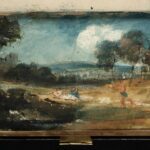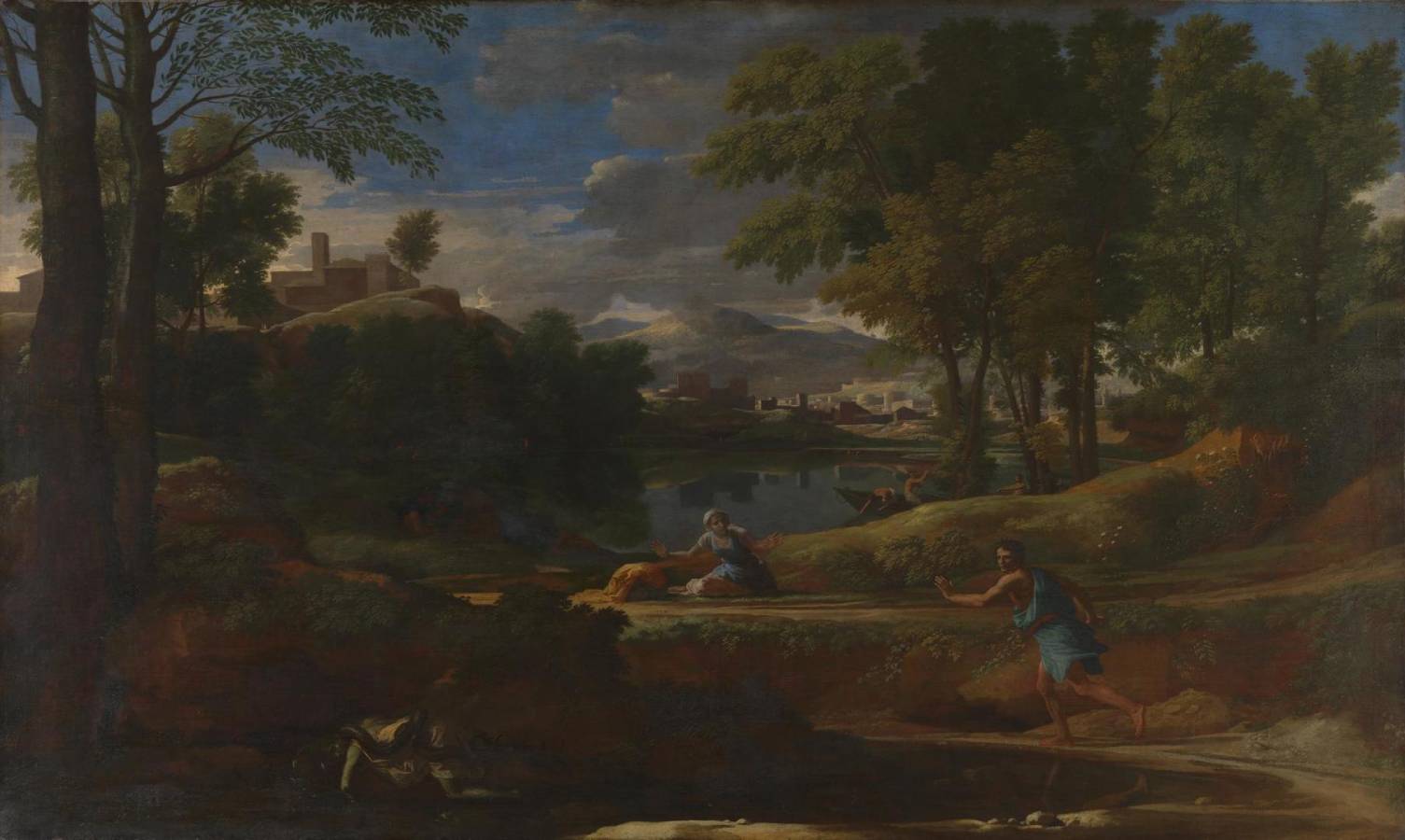Poussin, Nicolas (1594-1665)
Paysage avec un homme tué par un serpent (Landscape with a Man killed by a Snake)
probably 1648
Oil on canvas, 118.2 x 197.8 cm
National Gallery, London
A man has been crushed by a snake and lies dead beside a pond: his body is limp and his skin putrid with a greenish-grey appearance. A man and woman react with fear and surprise, yet there’s something still and static about their gestures and poses. The way the landscape is constructed reveals the drama in stages: the running man sees the dead man and the snake, the woman sees only the fleeing man and a fishermen in the distance see only her. Trees are used to frame the action and the zigzag placement of the people in the landscape and the alternating areas of light and shade lead our eye deeper into the distance.
It is unlikely that this scene relates to a story from ancient mythology: several episodes in Apuleius’s tales known as The Metamorposes include snakes killing people but the details do not match the scene we see here. It has also been suggested that this painting shows the death of Opheltes taken from Greek mythology, but Opheltes was a child when attacked by a snake, and here we see a man.
The theme of this painting was probably inspired by the notorious snake-infested area of Fondi, south-east of Rome, and close to the cities of Terracina and Amyclae, which may be the ones shown in the background. However, during the seventeenth century Fondi was abandoned, and in the painting we can see many people in the landscape, so the setting is at least partly imaginary. Poussin spent most of his career in Rome, and in 1647 possibly visited this place with Jean Pointel, the patron for whom he painted this picture. Later sources imply that Poussin had heard of or witnessed an actual event when a man was killed by a snake, and this gave him the idea for the painting.
Pointel, a Parisian merchant, was one of Poussin’s most prestigious patrons. He also owned the artist’s Landscape with Orpheus and Eurydice, now in the Louvre, Paris, which shows Eurydice being killed by a snake. Both of Pointel’s paintings show scenes of sudden death in peaceful countryside.
The theme of the snake in the grass also alludes to the whims of fortune. This painting shows the reversals of fortune or luck created by an encounter with a dangerous animal. To the left of the seated woman, and barely visible, three people recline in the landscape and are unknowingly risking their lives.
Poussin’s composition is inspired by art from classical antiquity, which is particularly evident in the somewhat rigid pose of the man in blue. The condition of the paint surface is very poor and the colours have darkened over time, which makes it difficult for us to appreciate the painting’s original appearance. Despite this, Poussin’s skill can be seen in the reflection of buildings in the lake and the overlapping brushstrokes and varied green tones of the foliage in the different types of tree. (NG)
Compare:
 Turner, Joseph (1775-1851)
Turner, Joseph (1775-1851)
Copy of Poussin’s Landscape
1799
Tate Britain, London
See also:
• Apuleius (c.124-c.170)
